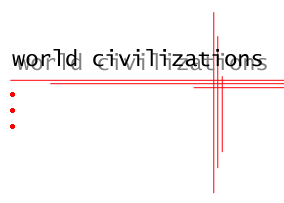GLOBAL LIQUIDITY CYCLE
May 22, 2007 at 3:06 am | Posted in Economics, Financial, Globalization, Research | Leave a commentThe Global Liquidity Blog
Thursday, May 17, 2007
LIQUIDITY TALK.
STEPHEN JEN’S BULLISH “PILLARS”
Morgan Stanley Global Economic Forum
Latest Global Dollar Liquidity Measure: +13.95% annual growth rate; latest Endogenous Liquidity Index: +9.35%
Morgan Stanley‘s Stephen Jen discusses the current situation of “ample global liquidity”, which he dubbs “Pillar 1” of the bullish case for risky assets:
Pillar 1. Ample global liquidity. This ‘real’ liquidity arises from a mismatch between world savings and investment rates. World capex has surprisingly been too low to absorb all available savings. Annually, there are some US$800 billion worth of ‘excess savings’ from oil exporters and Asian exporters to chase after assets.
Readers of this blog know that, every Friday morning, we publish our own version of this “Pillar”; we call it Global Dollar Liquidity Measure. Now, Jen’s “Pillar 3” caught my attention, because although he does not include volatility measures in his definition of liquidity, they do feature prominently in our own Endogenous Liquidity Index:
Pillar 3. Global de-coupling and positive growth prospects. Global de-coupling has effectively reduced overall financial risk, relative to a world powered by a single growth engine. Whether the US is in a refreshing mid-cycle slowdown, or cycle-terminating event is critical. This question, I believe, is more complicated than deciding on the US housing market’s fate. I see the global economy as healthy, with 2007 as the fifth consecutive year with global growth above 4.0%. The first phase of the globalization growth process entails a massive increase in world useable labor force and I believe we are at the tail-end. The second phase should entail a sharp increase in capital expenditures, infrastructure and production capacity. The expansion of labor and of capital should enhance the global economy’s potential growth rate. Risky assets, theoretically, should be in a secular bull market. Apparent financial bubbles are actually well supported by solid global economic fundamentals. Inevitable ‘frictions’ from the globalization process will be just minor irritants. From this broader perspective, discussion on global de-coupling is unhelpful. The cyclical risks to the global economy are inflation, and the likelihood of the global economy driving the US housing market rather than the other way around.
http://liquidityblog.blogspot.com/2007/05/latest-global-dollar-liquidity-measure_17.html
PALESTINIAN REFUGEES: BOOK
May 22, 2007 at 12:26 am | Posted in Books, Middle East, Zionism | Leave a comment|
Nearly half of the eight million Palestinians are registered refugees. Landscape of Hope and Despair explores this refugee experience in Lebanon through the medium of spatial practices and identity set against the backdrop of prolonged violence. |
Landscape of Hope and Despair Palestinian Refugee Camps Julie Peteet 2005 | ISBN 978-0-8122-3893-8 A volume in the Ethnography of Political Violence series Nearly half of the world’s eight million Palestinians are registered refugees, having faced partition and exile. Landscape of Hope and Despair examines this refugee experience in Lebanon through the medium of spatial practices and identity, set against the backdrop of prolonged violence. Julie Peteet explores how Palestinians have dealt with their experience as refugees by focusing attention on how a distinctive Palestinian identity has emerged from and been informed by fifty years of refugee history. Concentrating ethnographic scrutiny on a site-specific experience allows the author to shed light on the mutually constitutive character of place and cultural identification. Palestinian refugee camps are contradictory places: sites of grim despair, but also of hope and creativity. Within these cramped spaces, refugees have crafted new worlds of meaning and visions of the possible in politics. In the process, their historical predicament was a point of departure for social action and thus became radically transformed. Beginning with the calamity of 1948, Landscape of Hope and Despair traces the dialectic of place and cultural identification through the initial despair of the 1950s and early 1960s to the tumultuous days of the resistance and the violence of the Lebanese civil war and its aftermath. Most significantly, this study articulates space, place, and identity to construct an alternative to the received national narratives of Palestinian society and history. The moving stories told here form a larger picture of these refugees as a people struggling to recreate their sense of place and identity and add meaning to their surroundings through the use of culture and memory. Julie Peteet is Associate Professor and Chair of the Department of Anthropology at the University of Louisville. |









